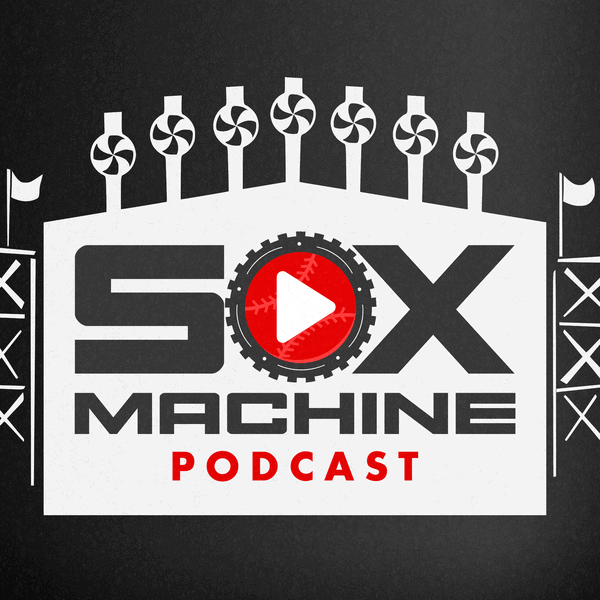Despite the lovely July temperatures, Ozzie was hot. It was only two days earlier when 29,000 fans came out to watch the second-place White Sox lose its third straight home game to the middling Texas Rangers. Falling to 51-52 with the series loss, five and a half games back of the division-leading Cleveland Spiders, the Pale Hose were sputtering and rumors of a roster teardown were spreading. So when the starting shortstop learned that General Manager Ron Schueler had agreed to send Harold Baines to Baltimore for Peanuts to be Named Later, Guillen lost it, smashing a clubhouse television in the process. “When I heard, I was upset and sad. I'm getting used to having my best friends traded, but I thought the last guy would be Harold.”
After signing to a second team-friendly one-year contract, Harold had been doing what Harold always did: hit. In 93 games for the South Siders, the 38-year old slashed .305/.382/.450, good for a 127 OPS+. But Ozzie knew that management’s decision to move Baines was just the beginning. Over the next 30 days, Jerry Reinsdorf dealt away five more of Guillen’s teammates, including Wilson Alvarez (3.4 WAR), Roberto Hernandez (1.6 WAR), and Danny Darwin (1.5 WAR).
Two days before the Baines deal, Bernie Lincicome of the Chicago Tribune penned a column - Indifference Hangs Heavy Over The Sox - that would not have looked out of place in the 2016 version of the same paper: “Management wants to break up a team before it knows what kind of team it has. Fans leave early, if they arrive at all. The team gives the diminishing faithful no incentive to come, to stay, to cheer, to sneer. Everyone seems to want to get on with something better, unsure of what that might be, but whatever it is, it has to be better than this.”
While Schueler’s 1997 deadline dealing differed in many ways from Hahn’s moves of 2016 and 2017, it’s fair to travel 20 years back in time and compare 1998 to 2018 and 1999 to 2019. White Sox fans may find comfort in knowing that they've been here before. Time is a flat circle, they say.
So what are the parallels? The 1998 squad was full of youth, boasting the third-youngest pitching staff and the sixth-youngest lineup in all of baseball, according to Baseball Reference. The farm system was strong, as evidenced by the inclusion of five future South Siders on Baseball America’s Top 100 list: Paul Konerko (2); Mike Caruso (34); Carlos Lee (43); Magglio Ordonez (56); and Lorenzo Barcelo (80). And like Rick Renteria, manager Jerry Manuel found opportunities for inexperienced pitchers to learn on the bump; Mike Sirotka (27), James Baldwin (26), Jim Parque (23), Jason Bere (27), Keith Foulke (25), and Bobby Howry (24) collectively threw 687 innings.
While the 1998 version of the White Sox fared far better than the 2018 club, the 1999 team won 75 ballgames, a laudable goal for the good guys in 2019. To help guide our 2019 offseason plan, we look back 20 years to review several key moves made by a franchise one year out from the playoffs.
ARBITRATION-ELIGIBLE PLAYERS
Jose Abreu, $16M: tender
Avisail Garcia, $8M: non-tender
Yolmer Sanchez, $4.7M: tender
Carlos Rodon, $3.7M: tender
Matt Davidson, $2.4M: non-tender
Leury Garcia, $1.9M: tender
Danny Farquhar, $1.4M: non-tender
There’s an argument for tendering Avi, hoping he reclaims some of his value before the July trade deadline. But below you’ll see why we’d like to open up playing time in the outfield. Unless Davidson develops a third pitch, we don’t see a future at Guaranteed Rate Field.
CLUB OPTIONS
Nate Jones, $4.65 million/$1.25M buyout: pick up
James Shields, $16 million/$2M buyout: decline, then offer a 1 year / $7 million deal
Our love of Nate Jones is well documented.
OTHER IMPENDING FREE AGENTS
Miguel Gonzalez (made $4.75 million in 2018): let go
Hector Santiago (made $2 million in 2018 — added): let go
FREE AGENTS
No. 1: Hyun-Jin Ryu (4 years, $65 million)
No. 2: David Robertson (3 years, $30 million)
No. 3: Trevor Rosenthal (2 years, $13 million with incentives + club option for Y3)
The White Sox signed both Tanyon Sturtze and Darris Jackson as free agents prior to the 1999 season. Neither moved worked, though buying veteran lottery tickets can be a sound strategy for a rebuilding club and we feel some targeted investments can help in 2019 and 2020. Enter the Three Rs: Ryu, Robertson, and Rosenthal. A starter and two high-leverage relievers who won't break the bank nor block many prospects. We entertained a Donaldson offer as the Sox desperately need an every day third baseman, but we’ll wait until next offseason to spend Jerry’s money. Hopefully Yolmer finds his power stroke.
TRADES
No. 1: Trade Nate Jones and Luis Gonzalez to the Milwaukee Brewers for Corey Ray
No. 2: Trade Dane Dunning and Steele Walker to the New York Yankees for Clint Frazier
In November of 1998, the White Sox traded Mike Cameron to the Cincinnati Reds in exchange for Paul Konerko. A month later Chris Singleton was acquired for a player to be named later (Rich Pratt). Then weeks before spring training commenced, Scheuler dealt John Ambrose to the St. Louis Cardinals for Sean Lowe. While the Cameron deal looks worse in hindsight with the benefit of the modern era's defensive metrics, these are the types of players Hahn should be grabbing: young, cost-controlled athletes blocked or forgotten by their current employers.
The Brewers outfield is crowded. Braun is signed through 2020 (with a club option in 2021), Cain is signed through 2022, and Yellich is signed through 2021 with a club option in 2022. And we haven’t yet mentioned Domingo Santana or Keon Broxton, two major-leaguers arg-eligible through 2021 and 2022, respectively. Corey Ray finally hit in 2018, posting a 124 wRC+ in 135 AA games. He's still a top-100 prospect, though some of his shine has worn off. His ETA is 2019, meaning he’ll step right into centerfield at Guaranteed Rate Field. He just turned 24 last month and we know Jerry loves a hometown kid. (It doesn’t hurt that Adam has known Corey since 2013.) Trading Gonzalez isn’t ideal, but he’s still in the lower minors and there are other CFs (Robert and Basabe) worth keeping in the system. The Brewers love acquiring former Sox relievers and Jones fits nicely into a bullpen that is likely to lose members to the rotation and/or free agency.
If you look at a list of 2018 minor league outfielders sorted by wRC+, Clint Frazier jumps off the page. Like Milwaukee, the New York outfield is full up; Stanton is signed through 2027 with an option for 2028, Judge is arb-eligible through 2022, Ellsbury played 112 games of league-average OF and is signed through 2020 with an option in 2021, Hicks is in the last year of his deal, and Gardner could be brought back on a club option. And this is to say nothing of the fact that they’re likely to pursue Bryce Harper. We’re sure Cashman sees Frazier as an inexpensive fourth outfielder with a promising future, but he could be acquired for organizational depth or some MLB-ready talent, particularly on the pitching side. (Happ, Robertson, Lynn, Sabathia, and Britton are all free agents). Dunning could be just the guy to do it, and God knows we could use a good corner with OBP skills to pair with Eloy.
SUMMARY
LF - Clint Frazier
2B - Yoan Moncada
1B - Jose Abreu
RF - Eloy Jimenez (After April 15)
DH - Daniel Palka
SS - Tim Anderson
C - Welington Castillo
3B - Yolmer Sanchez
CF - Corey Ray
Bench: Omar Narvaez, Leury Garcia, Jose Rondon
SP - Carlos Rodon, Reynoldo Lopez, Hyun-Jin Ryu, Lucas Giolito, and James Shields
RP - David Robertson, Jace Fry, Trevor Rosenthal, Juan Minaya, Dylan Covey, Ian Hamilton, Thyago Vieira, and Caleb Frare
(Dylan Cease enters the rotation in August.)
Payroll
Ryu: $17m
Abreu: $16M
Robertson: $10m
Castillo: $7.3m
Shields: $7m
Rosenthal: $7m
Sanchez: $4.7m
Rodon: $3.7m
Garcia: $1.9m
Total = $74.6m + the remaining pre-arb players contracts.
The Pale Hose won 75 games in 1999, netting them a second-place AL Central finish. That seems highly plausible in 2019. Magglio Ordonez, having played 145 games in 1998 at 0.6 WAR, completely broke out in 1999, leading the team in WAR with 5.8. (Paging Eloy Jimenez.) Singleton finished second on the team with 4.8 wins above replacement, hope for our newly acquired outfield duo. Konerko ended his rookie campaign as a league-average first baseman and the fresh-faced starting rotation produced three quality starters - Sirotka (age 28, 4.5 WAR), Baldwin (27, 2.5 WAR), Parque (24, 1.8 WAR) - all of whom came back and pitched again during the 2000 playoff run. Rodon, Lopez, and Giolito get another season to work out the kinks before Kopech and Cease join them in Chicago.
1999 was a bridge to the playoffs and 2019 should be no different.






